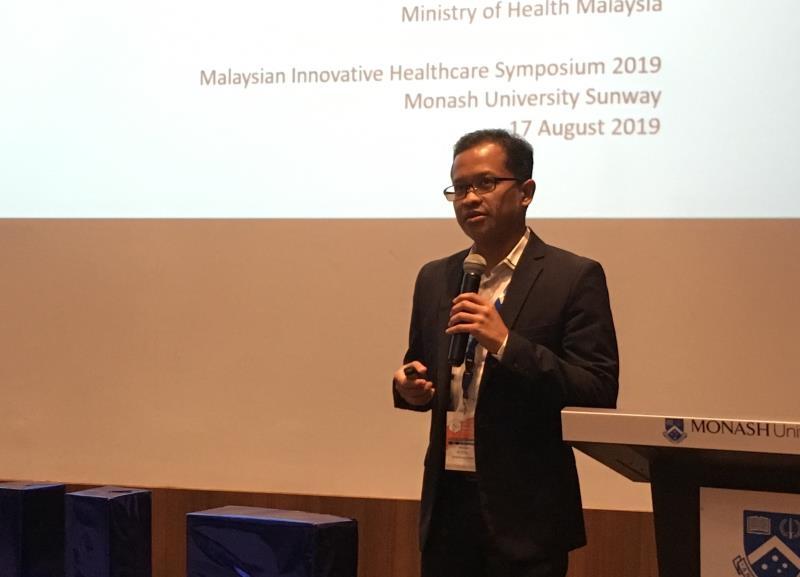 Dr Feisul Idzwan Mustapha, consultant public health physician and MOH Disease Control Division (NCDs) deputy director.
Dr Feisul Idzwan Mustapha, consultant public health physician and MOH Disease Control Division (NCDs) deputy director.Digital and non-digital health initiatives must not focus solely on raising awareness and knowledge, but also factor in issues in the patient’s surroundings that impede better health, says an expert.
Consultant public health physician and MOH Disease Control Division (NCDs) deputy director Dr Feisul Idzwan Mustapha encouraged all parties working on various solutions for the country’s growing non-communicable disease (NCD) burden to examine what can be done to create more health-promoting environments.
“Many interventions are based on increasing knowledge, but does that translate to a change of behaviour? When I say knowledge, we talk about health camps, medical camps, campaigns, talks, medical fairs, and so on,” said Feisul. “But if knowledge were enough, no [healthcare professionals] would smoke, and all of them would be taking their five servings of fruit and vegetables daily, as well as their 150 minutes of moderate intensity physical activity every week.”
In a keynote address at the recent Malaysian Innovative Healthcare Symposium (MIHS) 2019, themed “Innovating Health to Enhance Patient Engagement”, Feisul provided examples of possible health-affecting environmental features such as the accessibility and visibility of staircases in buildings, the default sugar content of pre-mixed beverages, and employer-based incentives for maintaining health.
“NCDs like diabetes and obesity are complex multifactorial issues, and not just about people making bad life choices,” said Feisul. “Clinical interventions, social marketing … digital and manual programmes need to look at the systemic and environmental drivers [for those NCDs]. The places people live influence their behaviour.”
Feisul highlighted two key concepts to consider in the creation of health interventions: co-creation and nudge theory. In discussing the former, he referred to the Jom Mama project, a pre-pregnancy targeted intervention which was designed after direct consultation with the target community of young adult couples on what they considered key health issues and what they needed to support health-seeking behaviour. [BMC Public Health 2016;16:1167]
“Consider the designing of health materials—such as educational leaflets—like you would for any business project; consulting the client, and not just the experts, is key,” said Feisul.
Nudge theory is a behavioural science concept that proposes small indirect suggestions as a means of influencing decision-making behaviours in individuals and groups. Feisul gave the example of a nudge used in Singapore’s energy sector—the display of average neighbourhood electricity usage levels in a consumer’s bill, and the inclusion of smiley faces on bills which were below average—which caused consumers’ electricity consumption patterns to change on a mass scale.
“People like to be like everybody else, and people like to be rewarded or recognized for what they do. Even simple nudges that consider these can change behaviour,” said Feisul.
On the issue of transforming the health system to address NCDs, Feisul highlighted the pressing need to take chronic care services and interventions out of clinics and into communities.
“A diabetes patient might only spend 2 hours in a year at the clinic … the rest of the year, they live with the disease at home. Interventions need to move there, to empower patients, and enable us to monitor them from the outside,” said Feisul. “That’s where digital solutions come into importance, but ultimately, they are just tools. Without understanding what drives people’s behaviour, they may not be able to effect change.”